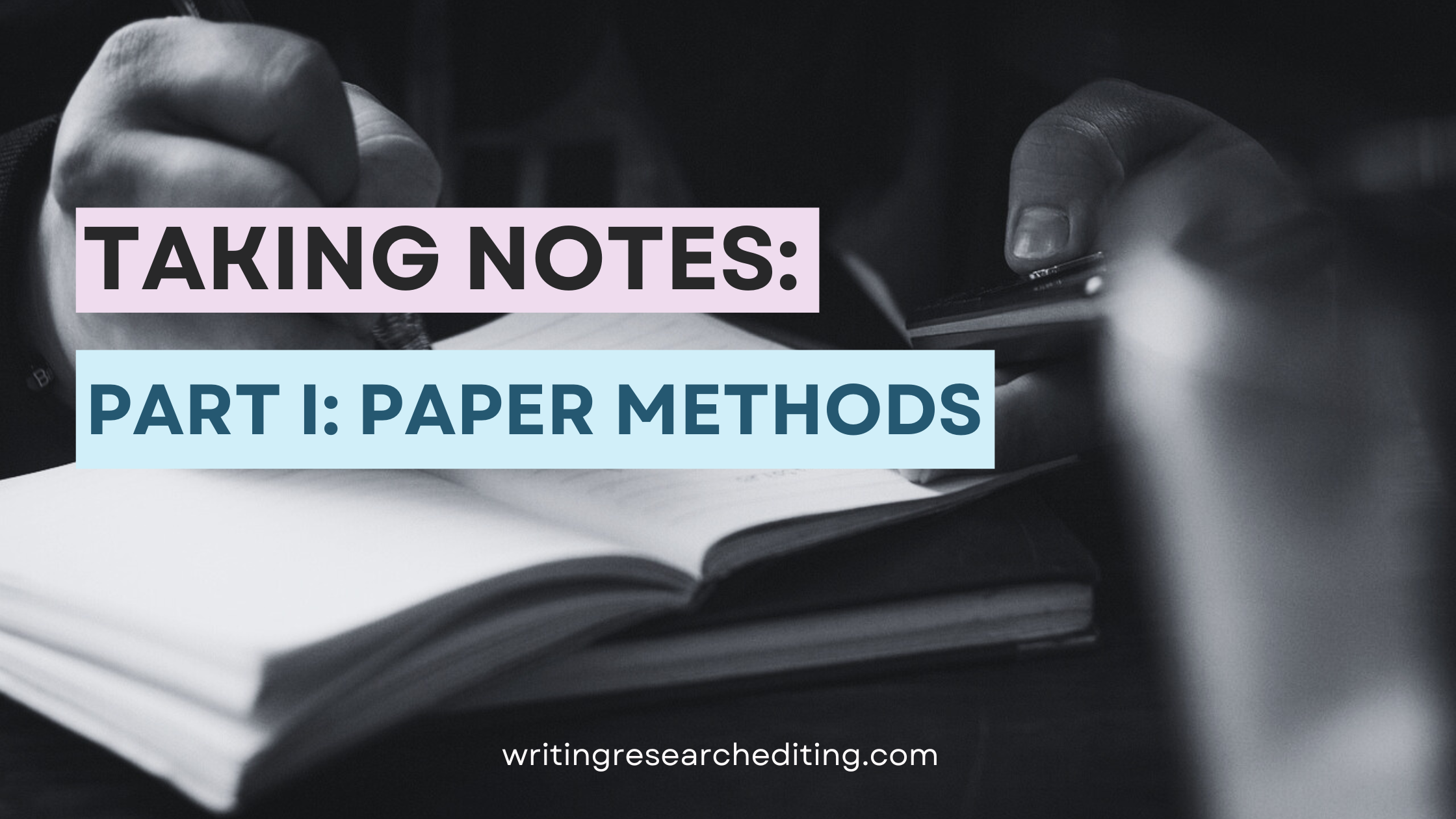It is vital, when writing, to document any material you used during the research phase. Developing a system for taking and making notes is key. Being able to report quotations and paraphrases accurately depends upon careful research note-taking methods. Here are classic paper-based note-taking methods that work well for any research project.
Note: This post contains affiliate or associate links. If you click on a link and make a purchase, I will receive a small commission at no extra cost. I take great care only to recommend products or services I’ve used and found helpful.
Index Cards – The Classic Notetaking Method
One paper notetaking method for research projects involves using index cards. First, you obtain an index card box, dividers you’ll label corresponding to the topics you will cover, and index cards. We can use this method in two ways.
The classic way to use index cards for research notetaking is to use a single index card for each new piece of information. First, record the bibliographic information at the top of each card. This information typically includes the author(s), title, city, state, publisher, and publication date. Second, record the paraphrase or the quotation you wish to use for your paper and the page on which you found this information. Double-check the card for accuracy.
Alternate Index Cards Method
A second way to use index cards for research notetaking, especially if you plan to use multiple sources or have multiple cards for one source, is to have a key with the bibliographic information on it and use abbreviations. To do this, create a notebook page for all bibliographic material. Give each source a distinct code. Record this code at the top of each index card associated with that source.
IMPORTANT: If you use this method, ensure that the code on your index card matches the code on the key. As with the classic method, keep information to one paraphrase or quote per index card. This makes the information easily manipulated when it comes time to write. In addition, quotes from the same book may be used in different places within your paper. By keeping one bit of information per index card, you can organize quotations and paraphrases by sections.
Notebook Based Note-Taking Methods
Another method of taking notes for your research project involves using a notebook. Create a page in the notebook for each new source material. As you did with the index card method, ensure bibliographic information is at the top of the page. Then, list your notes & page numbers for citations down the page. For some, this may be a better method than the index card method, but the weakness lies in the idea that you won’t be able to shift quotes around when you’re making your outline physically.
Using a Binder for Taking Notes While Researching
The same strategy works whether you use a notebook or a binder. The advantage of using a binder over a notebook is that you can move notes around and categorize them under different dividers. This may come in handy if you’re working on a large project with many different categories of information you might want to take or make notes on. For example, if you’re writing a thesis, you may wish to categorize your notes broadly by which section of your thesis you will be using those notes for. This is my personal favorite of the paper-based note-taking methods.
The Note-taking Process
Before you do your research, it is helpful to have a preliminary outline so you can be more focused on your research. If you have an outline you’re working with, you can use sections of the outline to organize your notes, whether using an index card method, a binder, or a notebook with dividers. Whichever of the note-taking methods you choose, it’s important to be consistent.
When taking notes, not only is it essential to be accurate in copying down your bibliographic information, but it’s essential to know when looking at your notes whether that note is a direct quote, a paraphrase, or your thoughts about the passage you’ve just read. Copy the quote accurately for direct quotes, with quotations and the page number or other citation information (line number, paragraph number) you took the note from.
When I take notes, I assume anything without quotes and lacking an asterisk or other mark I’ve made to denote my thoughts is a paraphrase. With paraphrasing, you’ll also want to note down the page number or section you paraphrased from, just as you would do with a quote. Regarding my responses to notes I’ve taken or my note-making, I denote them by using three asterisks, writing my thoughts, and then closing them with three asterisks. That way, when I write using my research, I know where to cite something vs. what I am thinking.
See Part II: Electronic Note-taking Methods
While some people prefer using pen and paper to take notes, others prefer electronic methods for note-taking and note-making. To learn about digital notetaking methods, you’ll want to read Part 2: Electronic Notetaking Methods.





[…] the materials you’ve found are reliable, you’ll want to have a system for taking and making notes and tracking your sources. It’s much easier to do this as you go. Keeping track of the sources you find can be tedious, […]
[…] selected and in front of you, devise some system for taking notes. You can do this the traditional way or electronically. The important thing is that you take careful notes and that you devise […]
[…] Pingback: Research Note-Taking Methods Part 1: Taking Notes on Paper – Writing, Research, & Editing […]